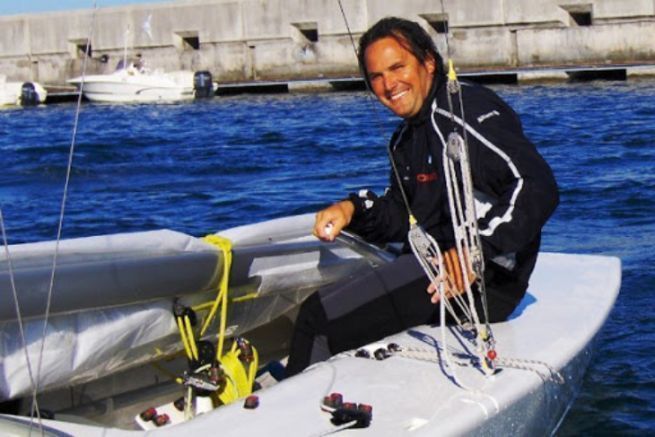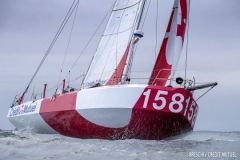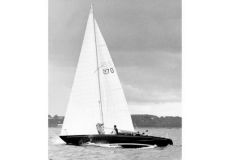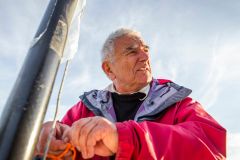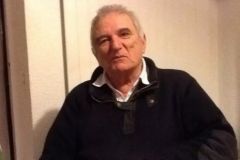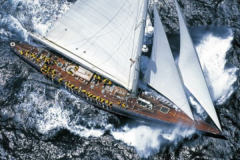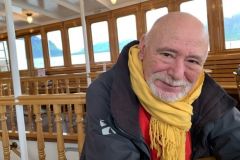A vocation from an early age
Sailing is a passion that has driven Juan Kouyoumdjian since he was very young. He lived in Argentina until he was 17 years old and sailed for the first time, especially in Optimist. At the same time, he sails with his father, who participates in many offshore regattas. This salt water gently infused in his veins gradually forged his future.
"Sailing has always been something I've been passionate about. I always wanted to be a naval architect. I never thought of doing anything else. Sailing is still one of the last areas that allows us to be free on this planet. We have a certain freedom of expression. Being involved in the design and the navigation, it allows us to keep this context of freedom that we lose a little more every day and to stay connected as much as possible to a free world", explains the architect.
First experience on the America's Cup
After a first semester in an Argentinean institute of technology, Juan Kouyoumdjian flew to the University of Southampton in England where he obtained his engineering degree a few years later. During his studies, he did an internship with Philippe Briand in La Rochelle, whom he had previously met on the Admiral's Cup. Shortly before graduating, he was again contacted by the designer to join his teams in France in the middle of the construction campaign for the America's Cup yachts France 2 and France 3.
"I graduated in June 1993 and started working a week later for Philippe Briand in La Rochelle. I stayed there until 1995, to work on the America's Cup Class boats, then I started my own business in 1996 details Juan K.

A career in the world of regattas and ocean racing
Since then, the architect has made a name for himself in the world of regattas and ocean racing, designing several boats for the America's Cup. The firm also works with Nautor's Swan in Finland and designs one-off boats for cruising. It has also collaborated on specific motorboat projects, such as hydrogen-powered models, projects requiring hydrodynamic optimizations, and a motor foiler, currently under study.
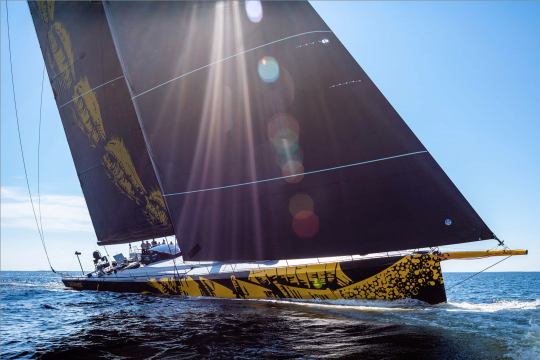
"I've done six America's Cups. This race is a big part of my career. We've also been very involved in the Volvo Ocean Race, designing Volvo 70s that have participated in three crewed round-the-world races. We have also designed IMOCA boats, including one that is in production. We don't focus on ocean racing, but we do a lot of work on these boats. 90% of our projects are for racing or performance. Unlike production boats where marketing is more important than creativity and performance, racing projects are the ones where we can express ourselves the most, while taking into account the class rules. It's a bit similar in the world of superyachts where the owners give us a lot of freedom of expression. They are often one offs and owners who have the means to make their desires come true." says the architect.
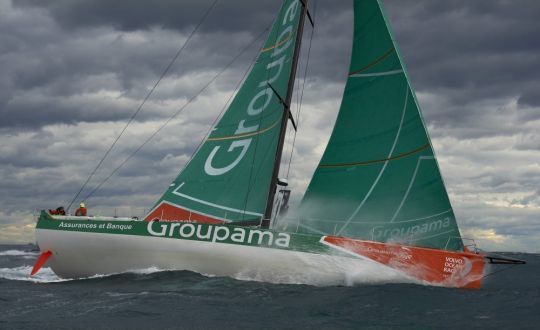
Sailing and racing, a must for becoming a naval architect
He owes his reputation above all to his sailing experience. An asset that he considers to be major for a naval architect, but which unfortunately cannot be learned in the classroom..
"I'm a reasonably good sailor and I still sail. It was being a sailor that allowed me to become a naval architect. I competed at an international level and being a good sailor connected me to a very competitive world, in which it is difficult to be respected if you don't have results. I've always enjoyed competitive sailing. It is an extremely noble sport. It's rare to have a sport where you combine sporting qualities with a tool. The boat becomes a tool that the sailor has to develop, as in kiteboarding, windsurfing..., as we also see in the car. Sailing at a high level allowed me to launch my practice. My first project was to be part of the crew of the owner who entrusted me with the design of a new boat.
It's very difficult for me to understand how someone who is not actively sailing and not in the racing business can become a naval architect. A young graduate who is not part of the sailing and racing world will have a hard time breaking in. This is the contradiction of universities. They train architects or engineers, but sailing competition should be one of the subjects taught. If I had to train students, I would do it on a boat. The sailing boat is so complex to understand. Without being able to get on board, feel it and make it go fast, it is very difficult to conceive it. A good sailor who doesn't have an engineering degree can be a better architect than an architect who has never been in a boat." explains Juan K.
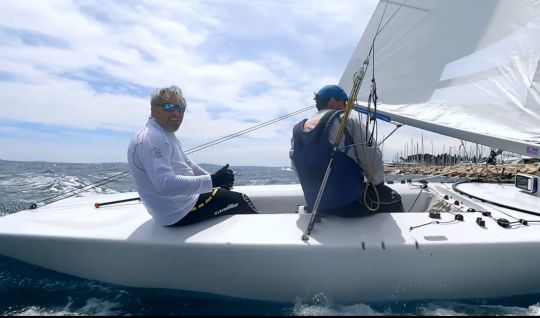
Drawing, steering and racing
Today Juan Kouyoumdjian has three offices. The biggest one is in Valencia, Spain, opened since the America's Cup 2004 and where a dozen people work. It is here that all the structural calculations are made. The second is in Buenos Aires, Argentina, where 5 people are employed. Finally the architect works from London.
"My time is divided into 3 parts. The creative activity I do alone in London. The executive activity, in Valencia and in Argentina with my team. And the commercial part, where I divide my time between clients and regattas. It allows me to keep in touch with the world of sailing" details Juan K.
If Juan Kouyoumdjian has been able to impose himself in the small and confidential world of ocean racing naval architecture, it is because he likes to innovate and propose new things.
"Each office has its own personality rather than its own specificity. The working methods are different, the specialties too. Today, there are 4 or 5 architectural offices that work or are involved in world tour projects. We all have more or less the same ingredients, the recipe is not the same. There are more conservative offices for clients who want classic things with architects who are very good in this field. And others that are more "borderline", a category I identify with. My clients come to me because the project should be a challenge in itself, not something classic or conservative. I like to design new things, concludes the architect.
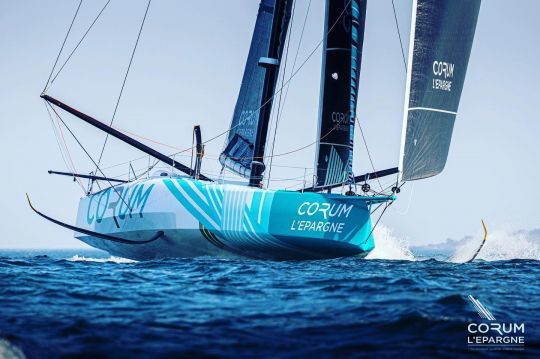

 /
/ 